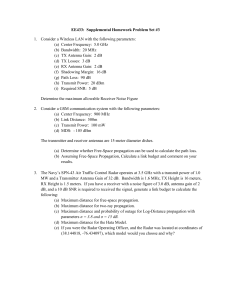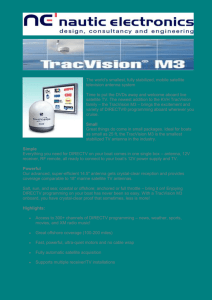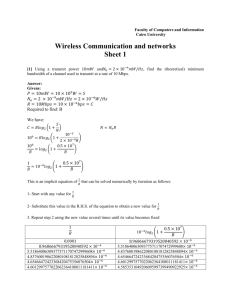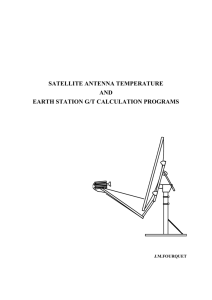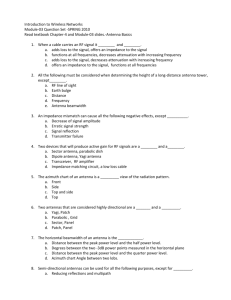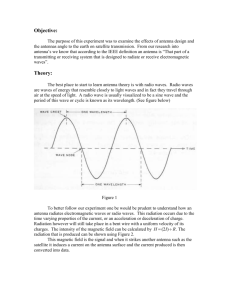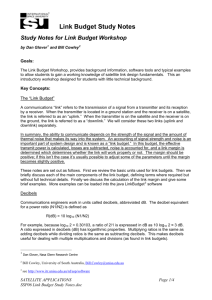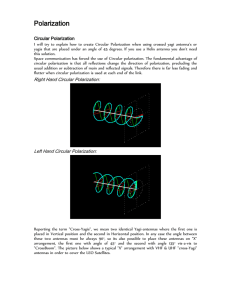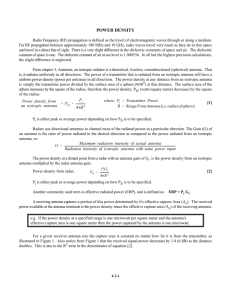EE 532: Home Work #2
advertisement
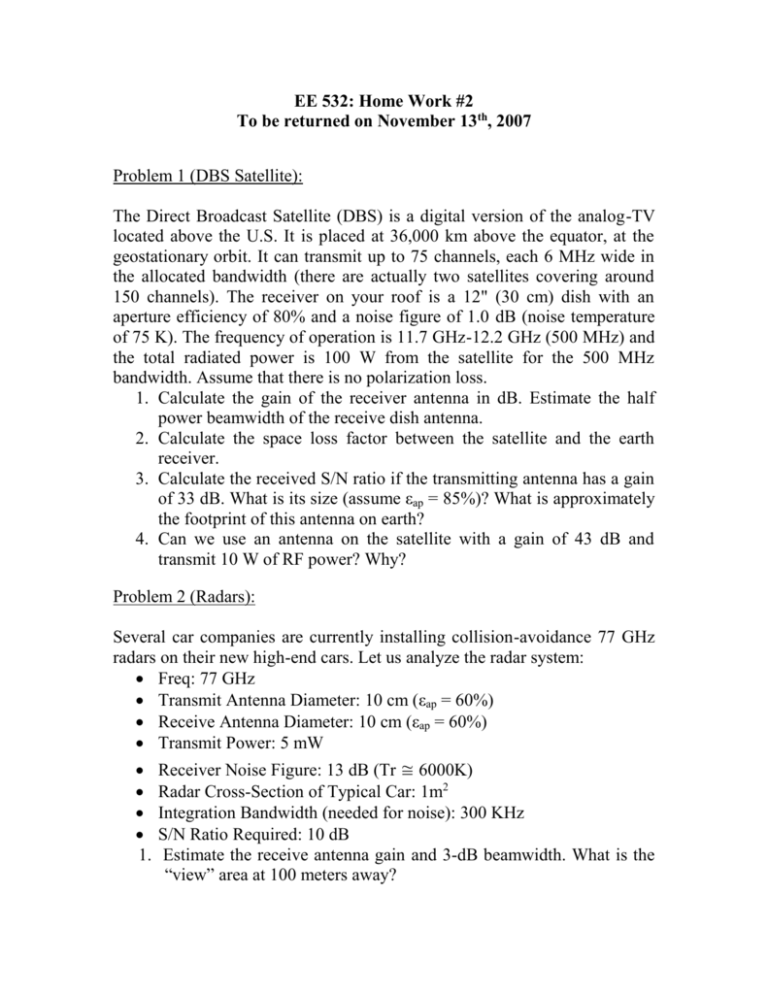
EE 532: Home Work #2 To be returned on November 13th, 2007 Problem 1 (DBS Satellite): The Direct Broadcast Satellite (DBS) is a digital version of the analog-TV located above the U.S. It is placed at 36,000 km above the equator, at the geostationary orbit. It can transmit up to 75 channels, each 6 MHz wide in the allocated bandwidth (there are actually two satellites covering around 150 channels). The receiver on your roof is a 12" (30 cm) dish with an aperture efficiency of 80% and a noise figure of 1.0 dB (noise temperature of 75 K). The frequency of operation is 11.7 GHz-12.2 GHz (500 MHz) and the total radiated power is 100 W from the satellite for the 500 MHz bandwidth. Assume that there is no polarization loss. 1. Calculate the gain of the receiver antenna in dB. Estimate the half power beamwidth of the receive dish antenna. 2. Calculate the space loss factor between the satellite and the earth receiver. 3. Calculate the received S/N ratio if the transmitting antenna has a gain of 33 dB. What is its size (assume εap = 85%)? What is approximately the footprint of this antenna on earth? 4. Can we use an antenna on the satellite with a gain of 43 dB and transmit 10 W of RF power? Why? Problem 2 (Radars): Several car companies are currently installing collision-avoidance 77 GHz radars on their new high-end cars. Let us analyze the radar system: Freq: 77 GHz Transmit Antenna Diameter: 10 cm (εap = 60%) Receive Antenna Diameter: 10 cm (εap = 60%) Transmit Power: 5 mW 1. Receiver Noise Figure: 13 dB (Tr ≅ 6000K) Radar Cross-Section of Typical Car: 1m2 Integration Bandwidth (needed for noise): 300 KHz S/N Ratio Required: 10 dB Estimate the receive antenna gain and 3-dB beamwidth. What is the “view” area at 100 meters away? 2. What is the received power for a car 100 m away from the radar? 3. Determine the maximum distance that one can detect a car reliably. Problem 3: (Radiation…this one is tricky!) A transmitting antenna produces a maximum far-field electric field intensity in a certain direction given by: 90 I 0 j ( wt kr ) E e r ar V / m where I0 is the peak value of the antenna current. The radiation resistance (or input resistance) of the lossless antenna is 50Ω. Find the maximum effective aperture of the antenna. Problem 4 (Polarization) - OPTIONAL: A circularly (CW) polarized wave (in the +z-direction) is incident on an antenna. Find the PLF if the antenna polarization is: 1. Linear and 60° from the x-direction; Linear and on the y-direction. 2. Elliptical Ea a x j 3a y
